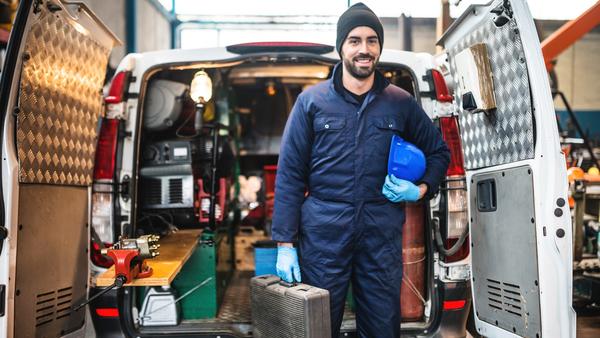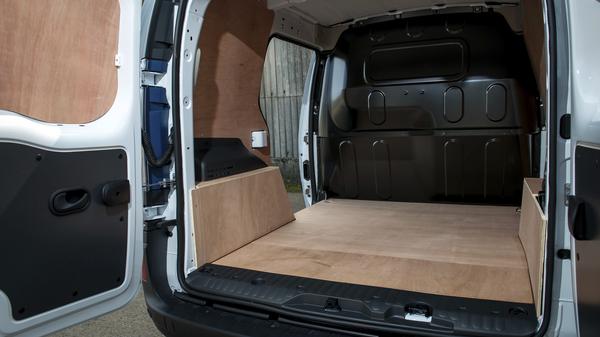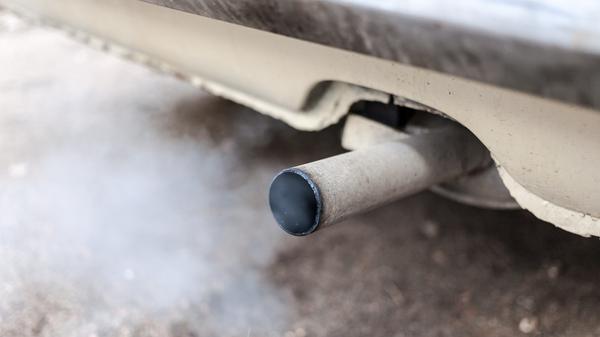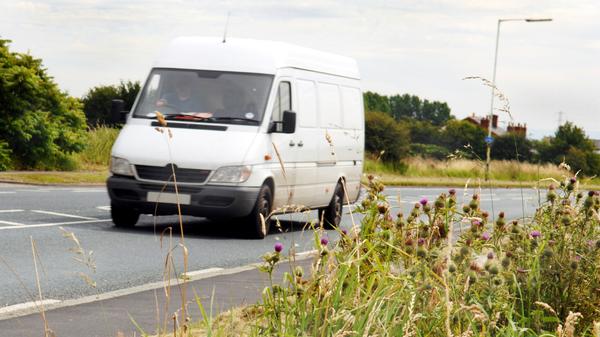Advice
Used van buyers guide
These are the things you need to bear in mind to ensure you don’t end up with buyer’s remorse because you have chosen a dud, or a vehicle that really doesn’t suit your daily requirements.


Words by: Tom Webster
Last updated on 11 January 2018 | 0 min read
Size up the options
Just as you don’t need to buy a sledgehammer to put up a couple of picture hooks, there is no point getting a huge 3.5-tonne van if all you need to carry around is a few tools. A bigger van will be less efficient, not to mention harder to park if you are using it around town.
Equally, if you absolutely have to carry something of note, check that you can fit it in before you commit to a purchase. Make sure the van you are looking at has the space to accommodate any long ladders or particularly wide items. Van models often come in different sizes, so be certain which one you are looking at – don’t get caught out by the short wheelbase with the low roof if that extra few inches are crucial. Weight is just as important, too – driving an overweight vehicle is illegal, so make sure that it has the necessary payload to cope with everything you need to carry. Will you be heading off into the woods and beyond in your new van? Consider whether a 4WD version is necessary. Equally, a version with rear wheel drive might be a better option for those that want to tow regularly.
Equally, if you absolutely have to carry something of note, check that you can fit it in before you commit to a purchase. Make sure the van you are looking at has the space to accommodate any long ladders or particularly wide items. Van models often come in different sizes, so be certain which one you are looking at – don’t get caught out by the short wheelbase with the low roof if that extra few inches are crucial. Weight is just as important, too – driving an overweight vehicle is illegal, so make sure that it has the necessary payload to cope with everything you need to carry. Will you be heading off into the woods and beyond in your new van? Consider whether a 4WD version is necessary. Equally, a version with rear wheel drive might be a better option for those that want to tow regularly.

Extras
Although the added extras might be less important if you are buying a van rather than a car, decide whether there are any things you can’t live without. Do you need side-opening doors? Is colour important for branding? Will you be making lots of calls in the cabin and need Bluetooth?
Many new vans – around 50% in the case of some models – are sold to big fleets that have no need for luxuries, so there will be plenty of sparsely equipped models on the market. There are better specified models are out there, but they might cost a little bit more. Decide what matters and narrow down the shortlist.
Many new vans – around 50% in the case of some models – are sold to big fleets that have no need for luxuries, so there will be plenty of sparsely equipped models on the market. There are better specified models are out there, but they might cost a little bit more. Decide what matters and narrow down the shortlist.
Employment history
The way that a van has been used could have a big impact on how much life it has left in it.
“Try to find out from the buyer how the vehicle has been used because this may be quite revealing and tell a story that the miles on the clock simply do not,” says Mike Hill of the RAC’s vehicle inspection team. “Even though vans are designed to carry heavy loads there is always a chance that they have been used to transport inappropriate loads which could lead to greater strain having been put on the vehicles’ suspension system. “One simple check to make is to look very closely at the suspension bump stops to make sure they don’t show any wear. If they do, this is a clear sign the vehicle has been used to carry excessively heavy loads.” Pushing down on the corner of the vehicle to see whether it returns to its original position after one bounce is a basic check to see if there are any problems, while it is also worth listening out for any noises and noting any discrepancies with the ride on a test drive.
“Try to find out from the buyer how the vehicle has been used because this may be quite revealing and tell a story that the miles on the clock simply do not,” says Mike Hill of the RAC’s vehicle inspection team. “Even though vans are designed to carry heavy loads there is always a chance that they have been used to transport inappropriate loads which could lead to greater strain having been put on the vehicles’ suspension system. “One simple check to make is to look very closely at the suspension bump stops to make sure they don’t show any wear. If they do, this is a clear sign the vehicle has been used to carry excessively heavy loads.” Pushing down on the corner of the vehicle to see whether it returns to its original position after one bounce is a basic check to see if there are any problems, while it is also worth listening out for any noises and noting any discrepancies with the ride on a test drive.

Inspect the outside closely
While the bodywork may not be quite so important on a van as it is on a car, it may indicate the vehicle has been involved in an accident, so check for any signs of damage. Look out for signs of whether a tow bar has been fitted – there may be holes at the rear if it has been removed. Check for rust on the wings, sills, below the bumpers and around the door and window frames. If you hear a cracking sound when you push gently on any rust, there may be greater problems beneath the surface.
Interior checks
Many companies or traders fit extras such as lining or racking to the loading bay of a van. This is not necessarily a bad thing, as it can protect the body from getting scratched or dented, or offer you more storage options if it is still left in. However, many companies will reuse the interior fittings, so will remove it before they sell. This may well result in there being holes on the inside of the van’s loading bay – not a problem if you want to fit new racking, or are happy to ignore it, but something to be aware of.
In the cabin, check the seatbelts, locks, heater and windows all work correctly. If there is air conditioning then test it on all levels, and make sure that there are no warning lights illuminated on the instrument panel.
In the cabin, check the seatbelts, locks, heater and windows all work correctly. If there is air conditioning then test it on all levels, and make sure that there are no warning lights illuminated on the instrument panel.

Tyres
“Check the tyres to make sure they are the correct ones for the van concerned,” says Hill. “Some vehicles require commercial tyres which have higher load ratings. If a vehicle is fitted with the wrong tyres it could dramatically affect the handling, potentially putting lives at risk.”
It’s also worth checking that the tread depth is legal – it must be more than 1.6mm in the UK – and that there are no bulges or tears on the sidewalls, or signs of uneven wear. Don’t forget to check the spare, too.
It’s also worth checking that the tread depth is legal – it must be more than 1.6mm in the UK – and that there are no bulges or tears on the sidewalls, or signs of uneven wear. Don’t forget to check the spare, too.
Fire it up
Start the engine from cold and look out for any excessive clouds of smoke from the exhaust, and listen for any odd noises. If you aren’t mechanically minded then you could get a vehicle inspection. This might seem expensive but it could save you a small fortune if an inspector finds a serious mechanical issue that you wouldn’t have picked up yourself.
If it is a Euro 6 diesel (the V5 document will tell you whether it is or not) then check the AdBlue levels are correct.
If it is a Euro 6 diesel (the V5 document will tell you whether it is or not) then check the AdBlue levels are correct.

Insurance
Before you head out on a test drive, make sure you are insured to do so. If you are buying from a dealer then this shouldn’t be a problem, although they may want to take a copy of your driving licence.
If you are buying privately then the onus is on you to make sure you are covered. This may require you taking out a temporary policy, or you could be covered by your existing policy. If you are in need of a new van insurance policy then shop around on price comparison websites who will be able to find the best deal on the market.
If you are buying privately then the onus is on you to make sure you are covered. This may require you taking out a temporary policy, or you could be covered by your existing policy. If you are in need of a new van insurance policy then shop around on price comparison websites who will be able to find the best deal on the market.
Test drive
On the test drive, check all the basic functions. Does it accelerate in a straight line without pulling to one side? It should brake smoothly – not doing so could be a sign of uneven wear. Is the steering firm and responsive? If not, it could be a sign of incorrect tyre pressures, or something more serious.
It is worth taking the test drive over a known route so you can concentrate on the vehicle rather than where you are going, and so you can make sure the odometer is accurate.
It is worth taking the test drive over a known route so you can concentrate on the vehicle rather than where you are going, and so you can make sure the odometer is accurate.

Full service history
“A full service history is even more important with vans due to the number of miles they may have done and the loads they carry,” says Hill. “If you are in any doubt about the authenticity of the servicing ask to see receipts or speak to the dealer concerned. Depending on the number of miles on the clock, find out if the cambelt and the diesel particulate filters have been changed at the prescribed times. Both of these could prove to be very expensive to replace.”
History check
You can get a history check to make sure the vehicle is not stolen and that the mileage on the clock is genuine. “With many vans being leased there is a higher possibility that mileages may have been altered to avoid leasing companies imposing penalties for any vehicles that have done too many miles,” says Hill.
Pay and collect
If you are happy with the van, then agree a price with the seller, and sort out a time to collect it. Make sure that you fill in the V5 document to change the registration details, and arrange tax and insurance before you pick up your new van.